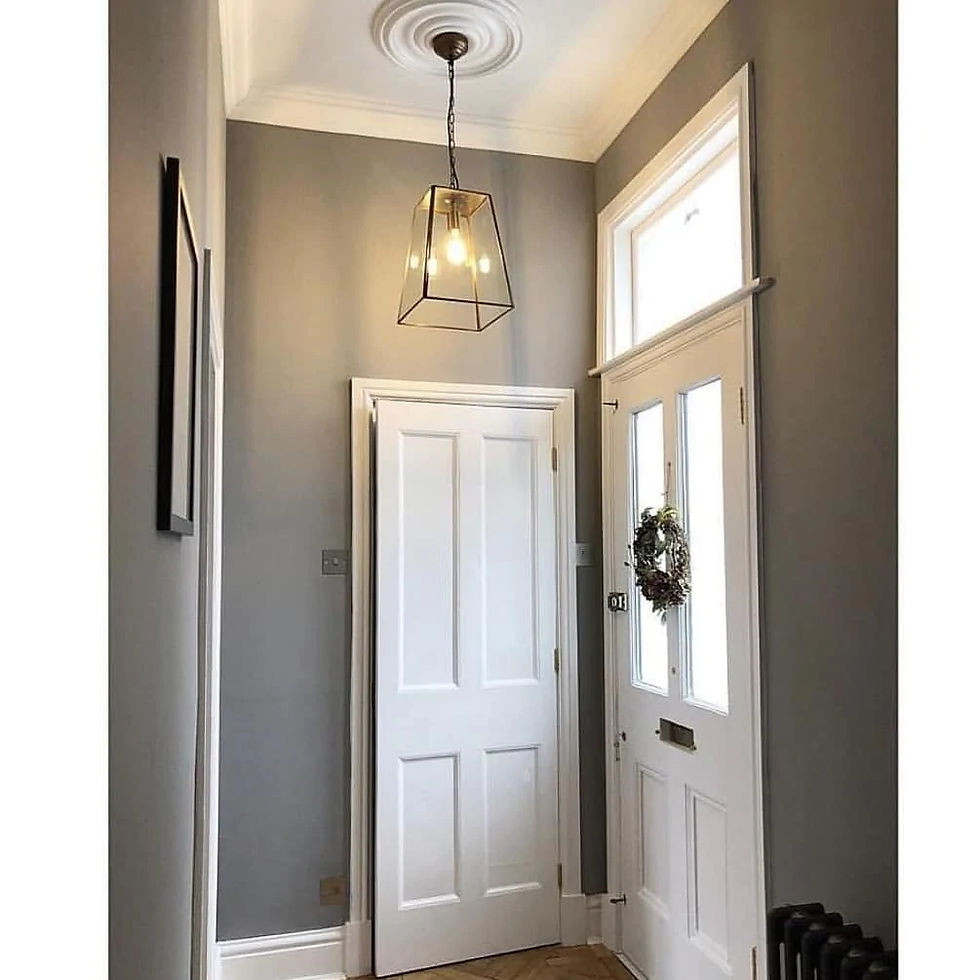Can Solar Powered Lights Be Used Indoors
- Topaz Du
- Jan 9, 2023
- 7 min read
Solar lights are a great way to save energy, money, and help to preserve the environment. Solar lights are powered by natural energy from the sun, so they do not require any electricity to operate, which helps reduce a home's electricity usage, resulting in lower energy bills and helping to reduce the overall carbon footprint.
Are there indoor solar lights? How do indoor solar lights work?
Solar lights use energy from the sun to power small light-emitting diode (LED) bulbs. Solar lights consist of several parts: solar panels, a rechargeable battery, a light sensor, and a controller. During the day, the solar panels absorb sunlight and converts it into electricity. The electricity is then stored in the rechargeable battery for later use. The light sensor triggers the solar panel to turn off when it senses that darkness has fallen. The controller then uses the stored electricity to power the LED bulbs. The bulbs remain illuminated for a preset amount of time, usually ranging from five to eight hours.
This means they can be used both indoors and outdoors, in any environment where they are exposed to direct sunlight.
Indoors, solar lights might be used to light a hallway or a stairwell, providing a warm and inviting glow to any room. Outdoors, they can be used to light pathways and driveways, making them safer and brighter to navigate. Solar lights are ideal for outdoor applications such as gardens, decks, patios, and more. They can also be used to light up outdoor signs, landscape features, and garden sculptures.
Regardless of where you install them, solar lights will turn on automatically when it gets dark and turn off when the sun rises. This is because they have built-in sensors that detect the changing light levels and respond accordingly.
How to Install Indoor Solar Lights?
#1, Looking for a place with the most sunlight to charge the indoor solar lights in the house

The key to finding the places with the most sunlight in the house is looking at the orientation of the house and seeing which areas have the most exposure to the sun throughout the day. Sunlight is one of the most important aspects of any home, providing natural lighting and warmth in the colder months, as well as the power source of solar lights.
First, it is important to pay attention to the orientation of the house. Typically, houses that are oriented east to west will get the most direct sunlight, with the east side getting more sunlight in the morning and the west side getting more sunlight in the afternoon. Additionally, houses that are built on slopes or hillsides often benefit from more direct sunlight, as the sun will reach the sun-facing side at a higher angle.
Second, look for areas in the house that are more exposed to the sun. This could include a porch, sunroom, conservatory, or windows that face southeast, south, southwest, and west. These areas may get more direct sunlight throughout the day, especially in the morning and late afternoon. Additionally, consider using skylights or other windows to bring in more natural light throughout the day.
Third, look for areas that are protected from shade or obstructions. If there are trees or other obstacles blocking the sunlight, it could reduce the amount of sunlight that gets into the house. Consider trimming back trees, clearing away debris, and rearranging furniture to make the most of the available sunlight.
Then, here is the place you can put the solar lights.
Someone will ask, can solar lights charge through windows? Will the solar energy conversion rate decrease when charging solar lights through a window?
Yes, solar lights can charge through windows, although the rate of solar energy conversion may decrease. This is due to the obstruction of the glass, which absorbs some of the sunlight’s energy before it can reach the solar cell. The amount of energy absorbed by the window depends on the type of window, the thickness of the glass, and the angle of the sunlight hitting it. To maximize the energy conversion rate, it is recommended that solar lights be placed directly in direct sunlight, rather than behind a window.
#2, Check the solar light’s settings before turning it on
Most of the solar lights on the market are controlled by light sensors, which means the light will be ON automatically when the brightness is lower than a certain level. That is a great function for outdoor use because you do not need to control it manually which is a bit hassle. However, when choosing solar lights for indoor use, it's important to opt for ones that come with an on/off switch, so you can control when the lights are on and off.
The on/off switch allows you to use solar lights in a variety of ways. You can turn them on and off when necessary, such as for a task or activity. You can also use the switch to turn off the lights when you're done with a task, or simply when you don't need them. This helps conserve energy and prevent light pollution.
Brightness Adjustment
Solar lights indoors with brightness adjustment offer two advantages.
Their brightness can be adjusted at the push of a button or a remote, allowing the user to customize their lighting to the desired level of brightness, creating the perfect atmosphere for indoor space.
During periods of continuous low sunlight such as in the rain or winter, it is best to adjust the brightness to lower levels. This can help conserve energy and still provide light for the areas that need it. During such periods, it is best to avoid setting the lights to the brightest settings to conserve energy, and instead, opt for a softer and more muted lighting. This is especially true for solar-powered lights that use rechargeable batteries; the lower the setting, the longer the battery will last.
Motion Sensor
Motion sensor solar lights are a great way to automate lighting in any indoor space. They provide convenience and energy savings by turning off lights when no one is in the room.
In a bedroom, motion sensor lights can be used to turn off the lights after the occupants have gone to sleep. They can also be used to automatically turn on a hallway light when someone gets up in the middle of the night. In a bathroom/kitchen/laundry room/living room/home office, motion sensors can be used to turn on the lights when someone enters the room and then turn them off when everyone has left. Motion sensor lights are also great for providing security and deterring intruders. They can be used to turn on exterior lights when someone enters the property and then turn them off after they leave.
#3, Place the solar light in a space where the light will be used
By choosing solar lights which come with separate solar panels, users can be sure that the lights are powered efficiently and reliably, no matter where the lights are placed. Furthermore, users can benefit from the flexibility and adjustability that such lights offer, allowing them to get the most out of the harvested energy.
This way, you can ensure efficient and reliable solar energy, as the panels can be placed in direct sunlight. Additionally, you won't have to worry about the solar lights being in a particular spot in the room, as the panels can be placed in the outdoor environment.
The ability to move the solar panels is especially useful if you have multiple solar lights in different areas of the house, as you can adjust the panels accordingly to get the best light output and performance. What's more, if your solar lights are indoors and out of reach of direct sunlight, the solar panels can be placed outside to ensure that they receive the energy they need.
In addition, having seperate solar panels, as opposed to ones that are built into the light itself, gives you the freedom to adjust the angle of the panels to get the most out of the solar energy. This is possible as the panel is not fixed directly to the light, thus giving you the freedom to angle the panel at the most efficient angle, be it towards the east, west or south.
FAQ about Indoor Solar Lights
A: Solar lights rely on the sun's energy to operate and do not need sunlight to function. However, they do require enough light energy in order to charge their batteries.
Sunlight is the visible light emitted by the sun and is the main source of energy for the charging of solar lights. Daylight is the natural light seen from any source, including sunlight and light reflected from the Earth's surface. While sunlight is more direct and powerful, daylight can also be used to charge solar lights, but usually requires longer exposure times and at a lower rate of energy absorption.
During the day, solar lights absorb energy from the sun and then convert it into electricity to power the lights during the night. Without sufficient sunlight, solar lights will not be able to hold enough of a charge and will not turn on at night. On overcast days, the amount of sunlight available will be reduced, and the solar lights will not be able to hold as much of a charge. This could cause the lights to turn off earlier than usual. On particularly cloudy days, the solar lights may not turn on at all. Therefore, it is important to make sure your solar lights receive plenty of direct sunlight to ensure they are able to hold a sufficient charge and turn on during the night.
Q: How to use outdoor solar lights indoors?
A: You don't need to make any extra adaptations. You can use outdoor solar lights indoors with solar energy by placing the solar lights near a south-facing window, or near a solar panel, which will collect energy from the sun and store it in rechargeable batteries. The battery can then be used to power the solar lights indoors. To maximize the energy collection, you can use reflective materials to direct more light onto the solar lights.
_edited.jpg)
























Comments